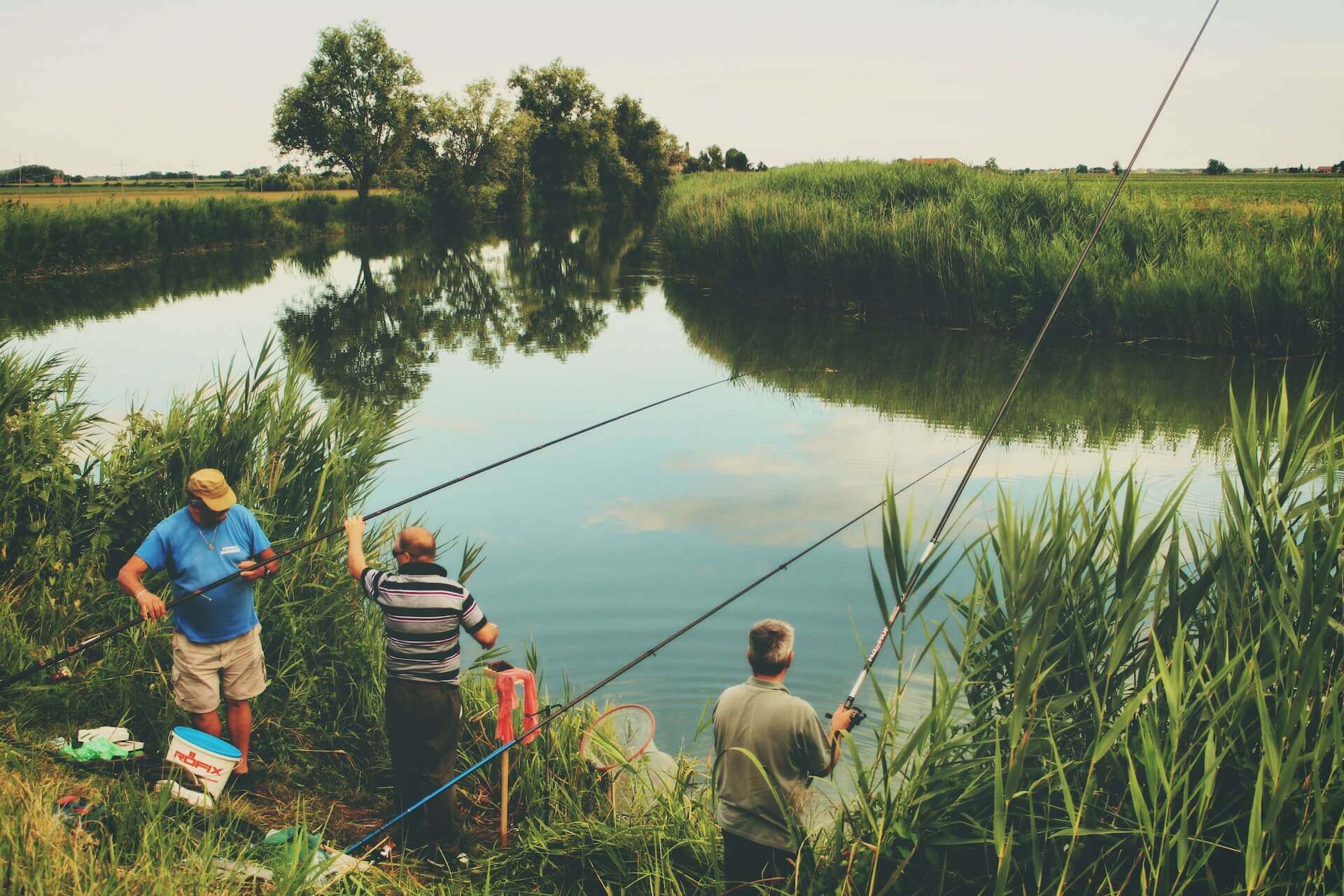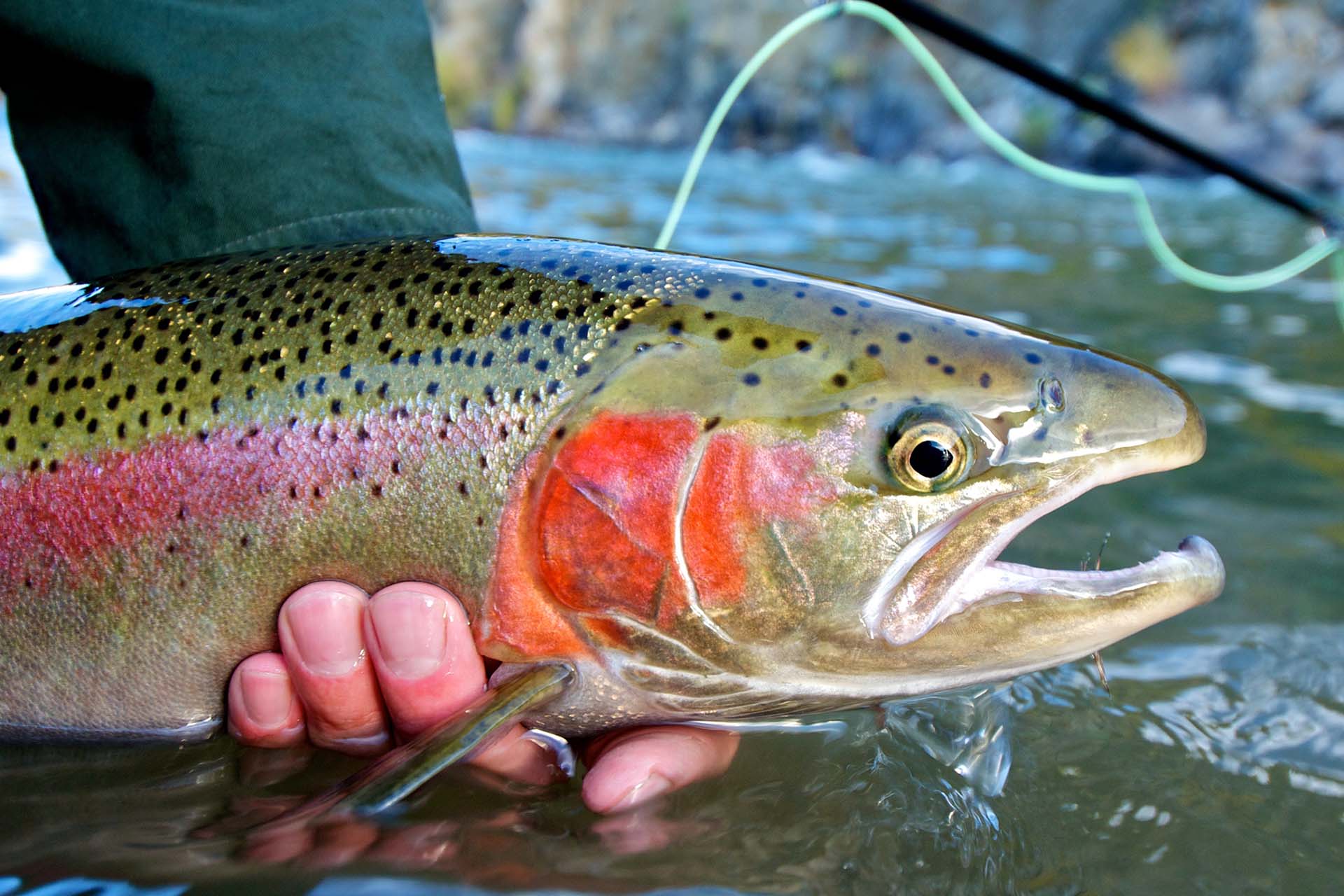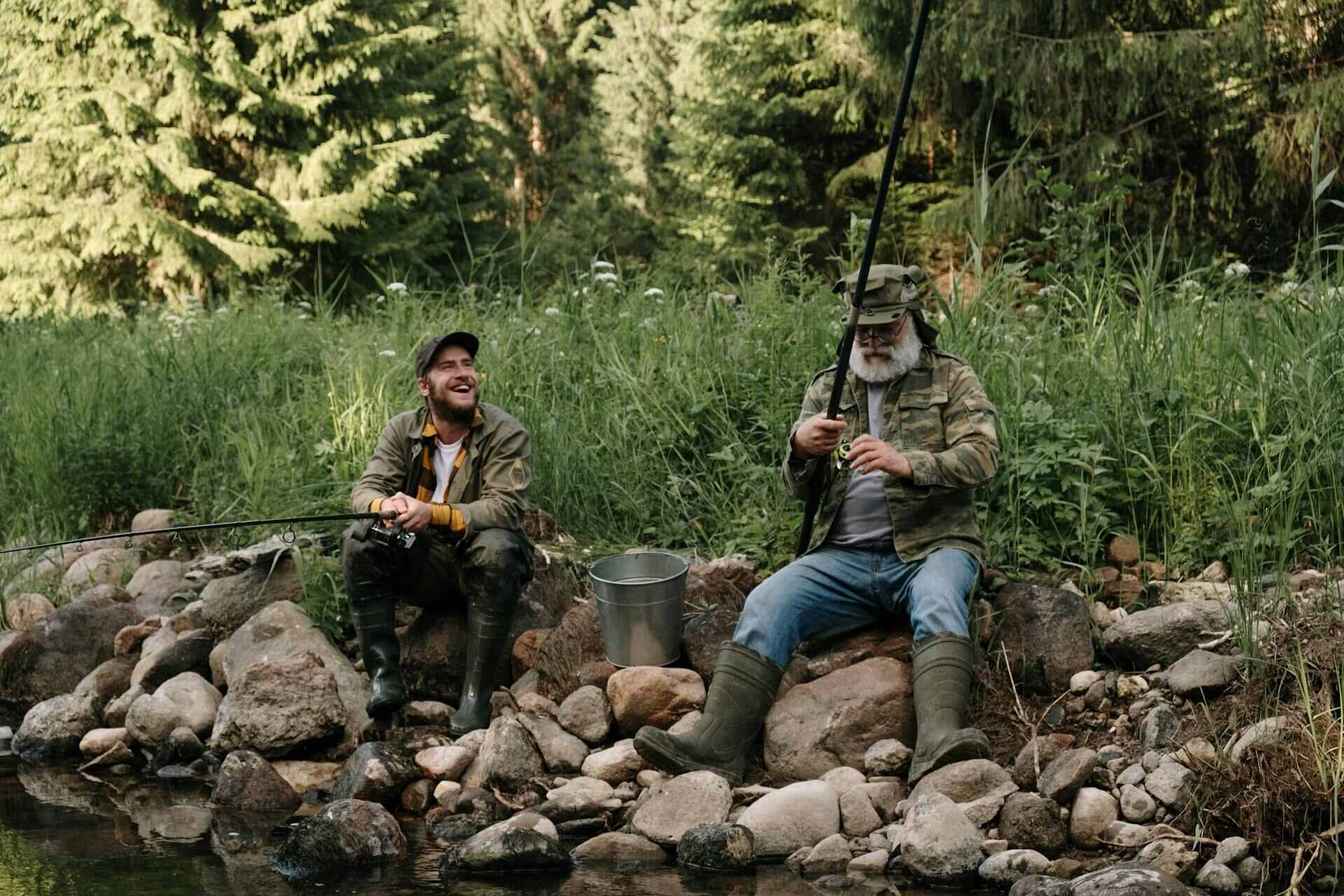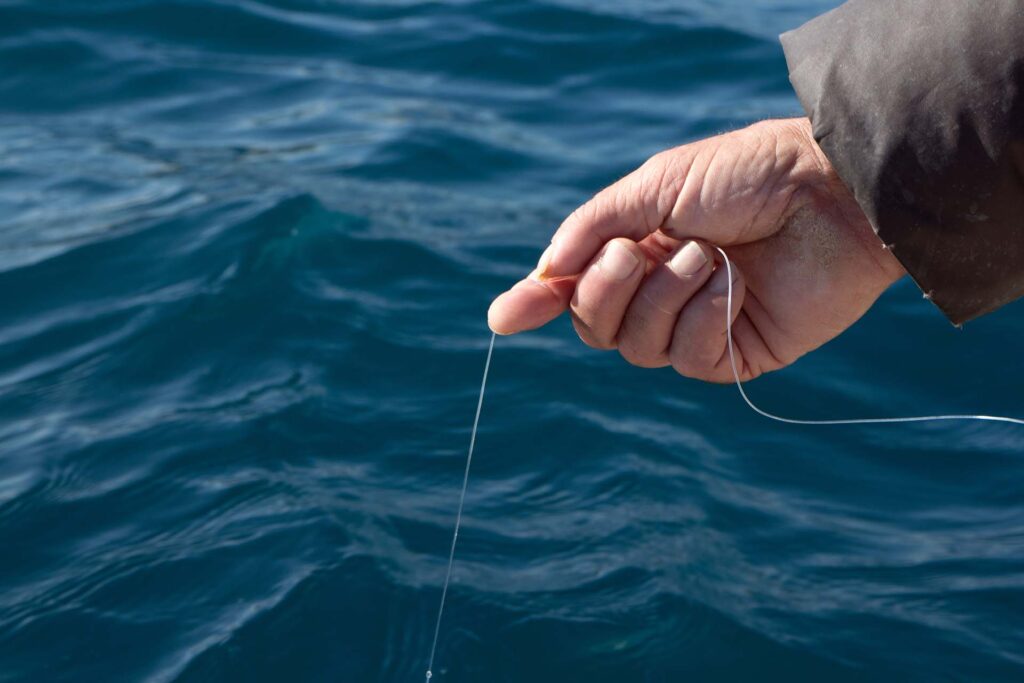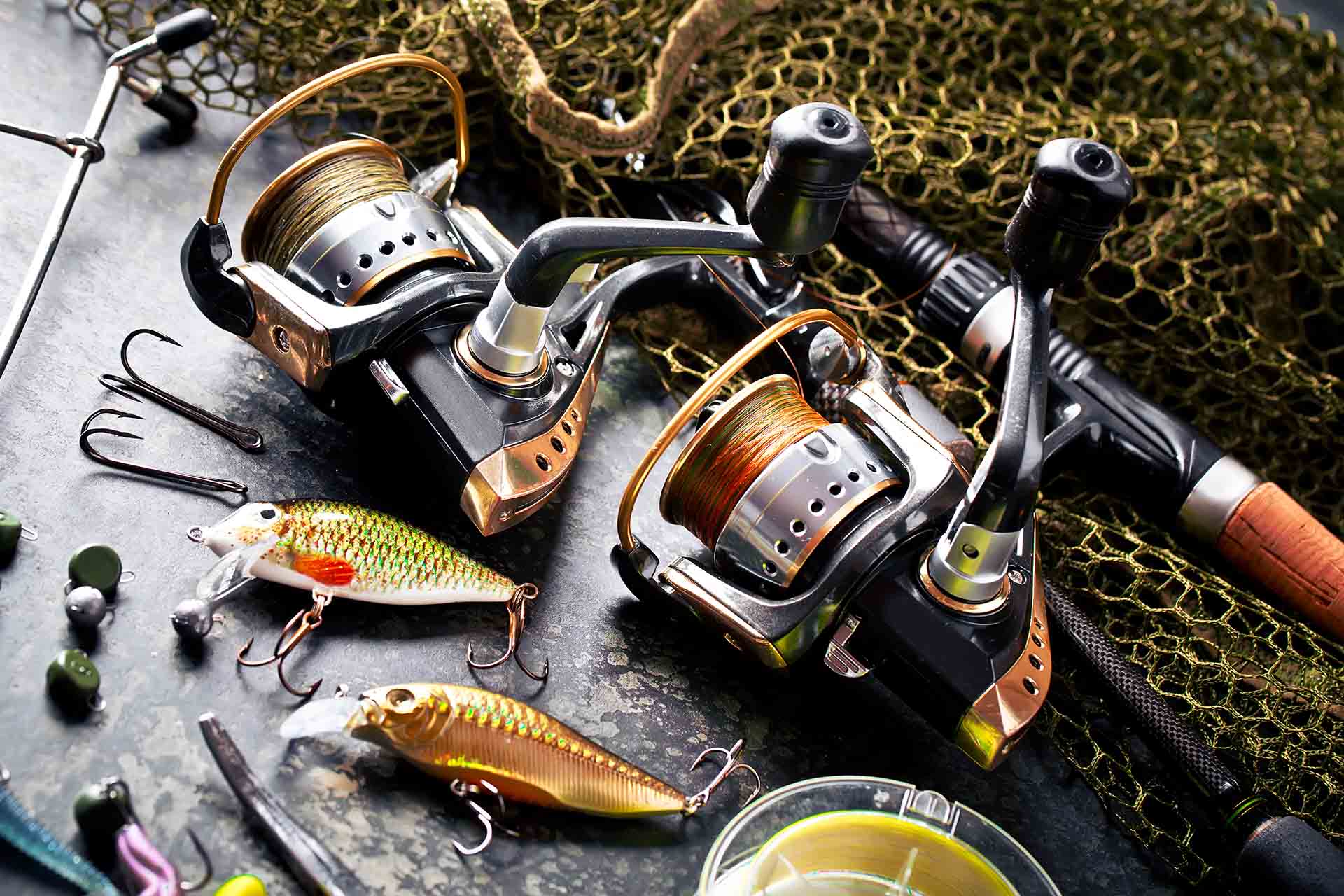Every avid fisherman knows about basses, but do you know when is the best time to fish for bass? Whether you’re hoping to catch a trophy largemouth or simply show off your impressive technique, having the right information can help ensure success. So, here’s a guide that will provide you with insight into exactly when fishermen should be preparing their gear and how to make every outing a bountiful one.
If you know the right techniques to employ, there are great opportunities for landing bass whoppers during the spring, summer, and fall seasons. Each period entails different tactics and gear, and there are various other factors you need to consider, including weather conditions and time of the day. With the right guidelines and a little bit of trial and error, you’ll surely be able to figure out the optimal time for your location.
What Kind of Fish Is Bass and Where Can You Find It?
Bass, commonly referred to as a whopper, is a common fish species typically found in many freshwater bodies, including rivers, lakes, and streams. They’re popular among both beginner anglers and more experienced fishermen because of their delicious taste and hard-fighting nature, which makes the whole ordeal that much more exciting and rewarding.
Bass typically feeds on smaller fish, insects, and crustaceans, making them a top predator in their ecosystem – this is good to know when you’re preparing homemade fish bait. Here’s an overview of the most common types of bass, along with the habitats you can find them in:
| Type of Bass | Weight | Habitat |
|---|---|---|
| Largemouth | Up to 22 pounds | Shallow waters with plenty of cover, such as vegetation, timber, and rocky shorelines in North America, South America, Africa, and Europe |
| Smallmouth | Up to 12 pounds | Cooler, deeper waters with rocky bottoms and moderate currents in North America |
| Striped | Up to 125 pounds | Coastal saltwater habitats, including bays, estuaries, and open ocean along the East Coast and in the Pacific Northwest |
| White | Up to 6 pounds | Clear, sandy-bottomed lakes and rivers with moderate currents in North America |
| Black | Up to 10 pounds | Slow-moving rivers, lakes, and ponds with abundant cover in North America, South America, Africa, and Europe |
They Can Be Found in Saltwater as Well
While whoppers are typically found in freshwater, certain species, such as striped bass, are considered common saltwater fish. They’re the largest of the family, with some specimens being able to grow up to 125 pounds, making them a highly sought-after species for both recreational and commercial fishing.
Besides the striped bass, the primary types found in the United States are the largemouth and smallmouth bass. The first one tends to prefer shallower waters with warm temperatures, while the second one is usually found in cooler, deeper waters. Because of these differences, it’s important to familiarize yourself with the habits and preferences of the specific species you’re trying to target.
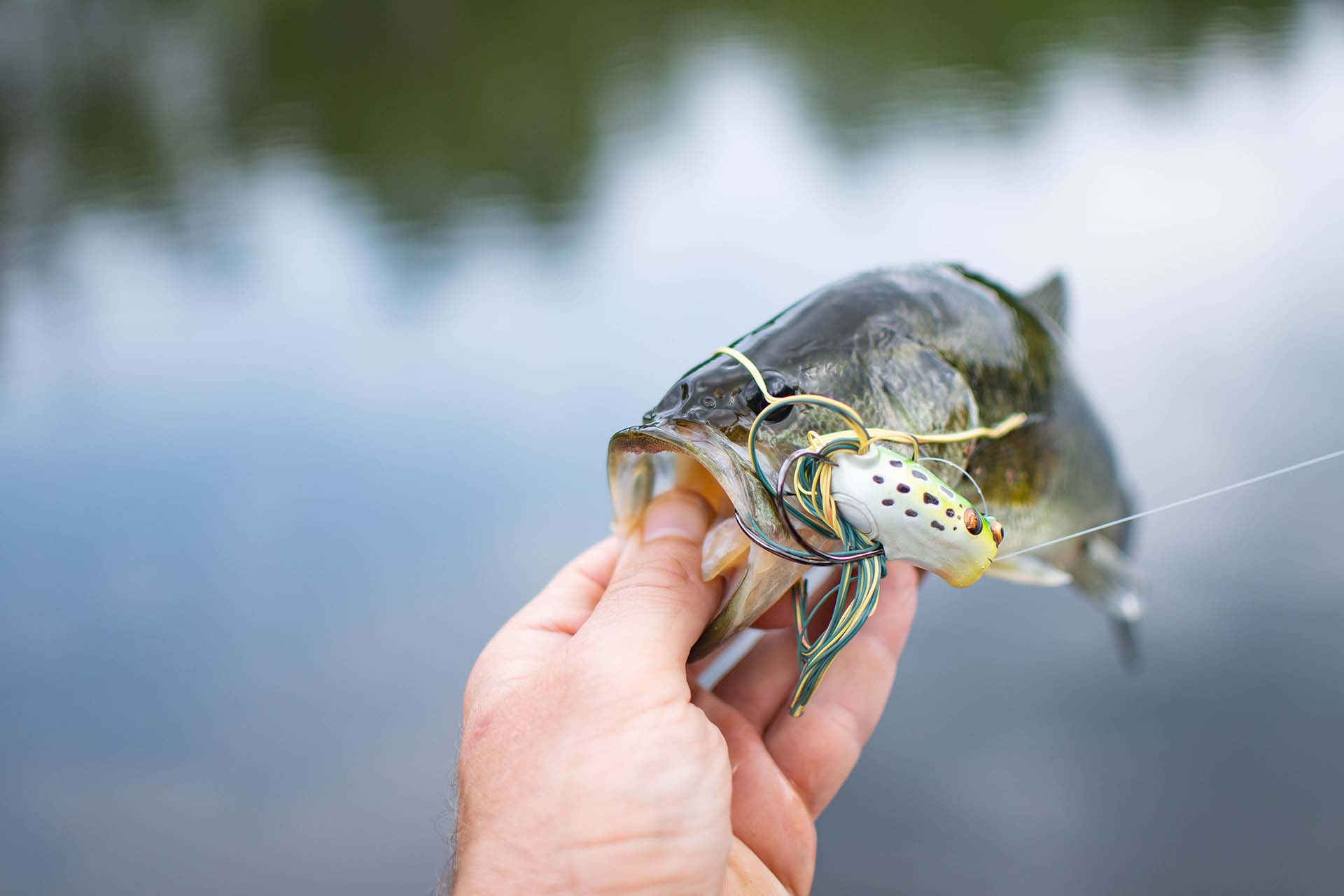
What Are Bass Behavior and Seasonal Patterns?
As already mentioned, these whoppers eat a variety of prey, such as small fish, insects, and crustaceans, so they can be considered opportunistic feeders. They have keen eyesight and rely on their sense of hearing to detect prey in the water, so they prefer clear water habitats with plenty of covers to hide and ambush their prey.
Water temperature plays a significant role in determining the activity levels of this species. In warmer waters, they tend to be more aggressive and feed more frequently, while in cooler waters, they may become sluggish and less active, but the specifics depend on the type you’re targeting. Let’s see what you can expect in general when it comes to the seasonal patterns of these impressive beasts:
Spring - Pre-Spawn, Spawn, and Post-Spawn Stages
Spring is a popular season for targeting this species because it marks their spawn period. During the pre-spawn stage, they are in an active feeding mode and tend to be found in deeper water as they prepare to move to shallower areas for spawning.
As water temperatures rise, they move into the spawning stage, where they seek out secluded areas with hard bottoms to lay their eggs. During this time, basses can be more challenging to catch, as they can become more territorial and less focused on feeding. Finally, during the post-spawn stage, they are less aggressive and focused on rebuilding their energy reserves, which can be used as a great advantage by an angler that’s familiar with their seasonal patterns.
Summer - Topwater Action and Deep-Water Tactics
Summer is the season for employing both topwater action and deep-water tactics in order to land some impressive whoppers. During the early morning and evening hours, topwater lures such as poppers and buzz baits can be used to attract them in shallower waters. As the day heats up, they may move to deeper, cooler water where soft plastics and jigs can be used to entice them.
However, it’s important to remember to practice sustainable fishing during the summer months, such as catch-and-release practice with barbless fish hooks and avoiding angling in stagnant or low-water conditions to protect and conserve their population.
Fall - Aggressive Feeding and Schooling Behavior
Some anglers consider autumn the prime season for landing basses, as cooling water temperatures trigger a big feeding frenzy before winter. During this time, they tend to become more aggressive and school up in deeper waters near structures such as drop-offs, ledges, and humps.
Crankbaits, spinnerbaits, and jigs are great fish bait options to use during this time, as they mimic the baitfish that basses are feeding on. Additionally, topwater lures, such as buzz baits and poppers, can attract feeding bass in the shallows during the early morning and late afternoon hours.
Winter - Reduced Activity and Seeking Warmer Waters
Winter can be a challenging time to target this species, as cold temperatures can reduce their activity level and force them to seek warmer waters. They tend to move to deeper waters during winter, as it has more stable conditions and a consistent temperature, so experienced fishermen can still land an impressive whopper if they employ the right angling technique.
What Is the Best Time of Day to Fish for Bass?
Sure, knowing the prime season is important, but understanding the time of day is also crucial, as many bass species are known to be more active during specific periods of the day. So, let’s take a closer look at when exactly you should plan your fishing trips while keeping in mind that this is only generally speaking – each type has its optimal time of the day.
Early Morning Fishing Advantages
Wondering when is the best time to fish for largemouth bass? The cooler water temperatures of early morning tend to keep bass in shallow waters and actively feeding, making them more accessible to fishermen. Additionally, water clarity is improved, which makes it easier for the basses to see the bait and increase the chances of a successful catch.
There Are Also Late Afternoon and Evening Fishing Opportunities
Late afternoon and evening can be great times for targeting this species, especially during the summer months. As the day cools down, they tend to move to shallower waters to hunt for food. Moreover, in low-light conditions, they may move closer to the surface in search of baitfish, offering an exciting topwater action opportunity.
Night fishing with artificial lights can also be effective during the evening hours, as it can draw baitfish and, in turn, attract bass to feed. Anglers should take advantage of these opportunities, but it’s important to always practice safe and responsible fishing while respecting local regulations.

How Do Weather Conditions Impact Bass Activity?
It’s clear by now that weather conditions play a significant role in shaping the behavior and activity levels of basses, but let’s underline a few additional aspects. First things first, changes in barometric pressure shouldn’t be overlooked – when it’s high, bass tends to become less active and may move to deeper waters or areas with more cover, while lower pressure leads to more active feeding behavior.
On top of that, wind, rain, and temperature fluctuations can all impact bass movement – wind by creating currents, rain by disrupting the water’s surface, and temperature by making them more or less active. Sure, there’s a lot at play here, but getting the hang of how these weather conditions influence the behavior of basses will definitely turn out to be super rewarding.
Do the Moon Phases Affect Bass Fishing?
There’s one more natural aspect I should mention, and you might find it surprising, but the moon phases have a significant impact on angling for this species. Here are the moon phases along with their effect on bass:
- New Moon – activity is highest, with the fish feeding and moving in larger groups,
- Waxing Crescent Moon – they are active and ready to feed at dusk and dawn but less so during daylight hours,
- First Quarter Moon – some increased activity, but less than a New or Full Moon,
- Waxing Gibbous Moon – fairly consistent activity throughout the day,
- Full Moon – very strong activity due to increased feeding opportunities,
- Waning Gibbous Moon – similar levels of activity as the Waxing Gibbous phase,
- Third Quarter Moon – activity slightly decreased compared to the Full and New Moons,
- Waning Crescent Moon – lowest levels of activity in the whole cycle, but can still produce catches if planned accordingly.
Tips and Techniques for Successful Bass Fishing
It doesn’t take an angling genius to know that part of the whole ordeal is having the right gear, from the fishing rod all the way to the tied fish hook, as well as knowing the right style of angling to employ. So, here are a few tips for when you venture out on this exciting adventure to land some whoppers.
Choose the Right Lure and Bait for Different Times and Conditions
Properly selecting lures and bait is essential for successful bass fishing. Depending on the time of the year, weather conditions, and type of water body, different lures and baits can be more effective than others.
Soft plastic worms are a popular choice in many conditions, while crankbaits may be preferred when bass are actively feeding near the surface. Live bait, such as crayfish or nightcrawlers, can also be effective when fishing in deeper waters.
Utilize Effective Bass Fishing Rigs and Tackle
Besides using the right lure and bait, rigging up correctly is key to success. Fishing with a Texas rig or Carolina rig in deeper waters can help anglers reach their target species, while topwater baits such as poppers or buzz baits can be especially productive when bass are feeding near the surface.

Learning When Is the Best Time to Fish for Bass Will Make Your Angling Adventures More Fun
All in all, the best time to go fishing for whoppers depends on a variety of factors, so it’ll take a lot of trial and error to get the hang of it and figure out what works best for your specific location. But this certainly pays off – you’ll be landing impressive catches in no time, and you’ll be able to enjoy the peaceful nature along the way. It’s time to get out there and give it your best shot!

